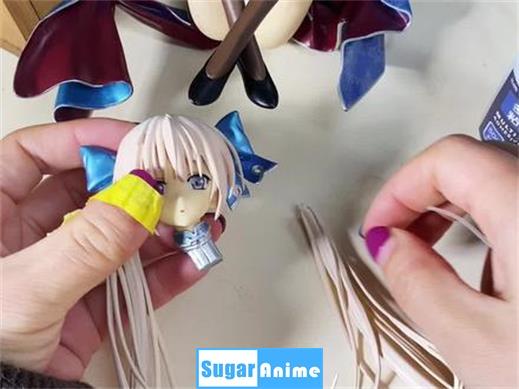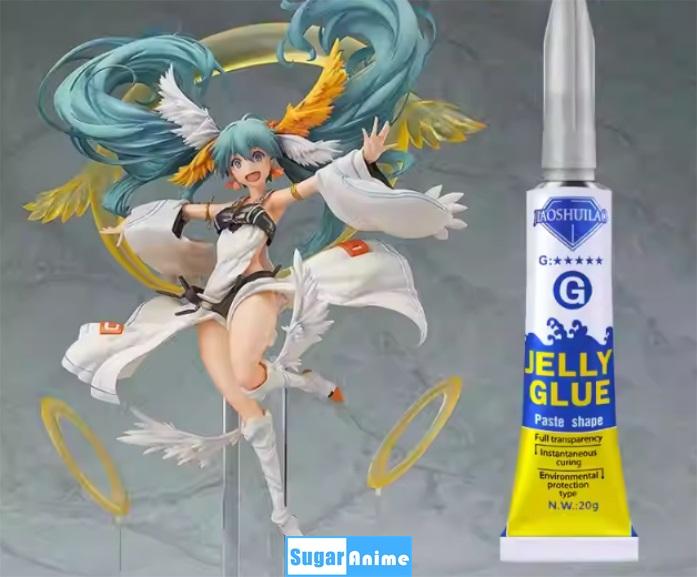Introduction
Anime figures hold a special place in the hearts of collectors, capturing beloved characters and moments from our favorite series. However, accidents happen, and your treasured figures may suffer from damage or breakage. But don’t despair!

Assessing the Damage
Before diving into the repair process, it’s crucial to assess the extent of the damage. Carefully examine the broken pieces, identifying the areas that require repair. This step will help you determine the appropriate methods and materials needed for the fix.
Gluing Techniques
1. Super Glue: Super glue is one of the most commonly used adhesives for figure repairs. It provides a strong bond and is suitable for hard plastic or resin figures. Apply a small amount of super glue to the broken parts, ensuring they fit together perfectly. Hold them in place until the glue dries.
2. Epoxy Resin: Epoxy resin is a versatile adhesive that is ideal for repairing larger or more complex breaks. It consists of two components that need to be mixed together before application. Apply the mixed resin to the broken parts, joining them carefully. Epoxy resin provides a durable and long-lasting bond.
3. Plastic Cement: Plastic cement, such as Tamiya Extra-Thin Cement Glue, is specifically designed for plastic models and figures. It creates a strong bond and dries quickly. Apply a small amount of the cement to the broken surfaces, ensuring they fit together perfectly. Hold them in place until the glue sets.
Proper Handling and Application
1. Use as little glue as possible: When applying the adhesive, it’s crucial to use the minimum amount necessary to hold the broken parts together. Excessive glue can create a messy appearance and compromise the aesthetics of the figure.
2. Precision application: For precise application, use a toothpick or a small brush to spread the glue thinly on the surfaces that need to be joined. This technique ensures a controlled and even distribution of adhesive, minimizing the risk of excess glue residue.
3. Patience is key: Allow sufficient time for the glue to dry and set properly. Rushing the process may result in a weaker bond and potential re-breakage. Follow the manufacturer’s instructions to determine the recommended drying time for the specific adhesive you are using.
Finishing Touches and Enhancements
1. Sanding and smoothing: After the glue has thoroughly dried, gently sand any rough edges or excess glue using fine-grit sandpaper. This step helps create a seamless finish and prepares the figure for repainting or touch-ups, if desired.
2. Repainting damaged areas: If the figure has suffered from paint chips or scratches, you can carefully repaint those areas using acrylic paints that match the original colors. Take your time, apply thin layers, and blend the new paint with the surrounding areas for a seamless result.
3. Display and preservation: Once your figure is repaired and restored, consider taking preventive measures to protect it from future damage. Display it in a safe and dust-free environment, away from direct sunlight or extreme temperatures. Regularly clean and maintain the figure to ensure its longevity.

FAQ
- The head of the figurine fell off, the neck is thin, and the head is heavy. How should I repair it?
Use a power drill to create a hole and find a suitable metal rod to insert into it. Secure the rod in place using a strong adhesive like 502 glue. It is recommended to use a higher-quality adhesive.
- What should I do if the figurine loses color? Is there a solution?
When an anime figure experiences discoloration, it is necessary to purchase specialized paint and brushes. Carefully and attentively apply the paint to the affected areas. If you are unsure, consider seeking assistance from a professional store for a better result.
Additionally, it is important to maintain and prevent discoloration by keeping the figure away from direct sunlight, dust, and sweat. If possible, display the figure in a glass case. When cleaning, use a soft-bristle brush and avoid exposing the figure to water.
- I left my anime figurines in a box for too long, and the plastic base deformed. Can it be repaired?
In the case where the plastic base of an anime figure becomes deformed due to extended storage, the repair feasibility depends on the level of deformation. For minor deformations, use a hairdryer or heat source to warm up the affected area. Gently reshape it using your hands or tools. For severe deformations, professional model shops can offer repair services. If the deformation cannot be fixed, consider making a new base, as it is relatively straightforward to create.
- What should I do if the figurine’s arm falls off or its leg breaks?
Common accidents like detached arms or legs can be fixed using the “pegging” method. However, when it comes to color fading, it is difficult to restore PVC figures. If preserving the color integrity is a significant concern, consider purchasing Garage Kit (GK) figures, as they are often made with materials less prone to color fading.
If you are interested in anime figurines, you can use Diipoo‘s custom anime figurine service.

